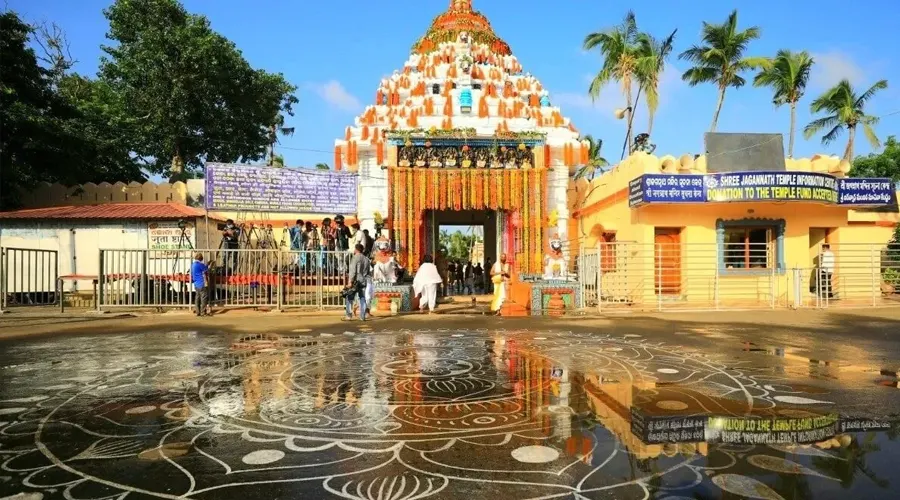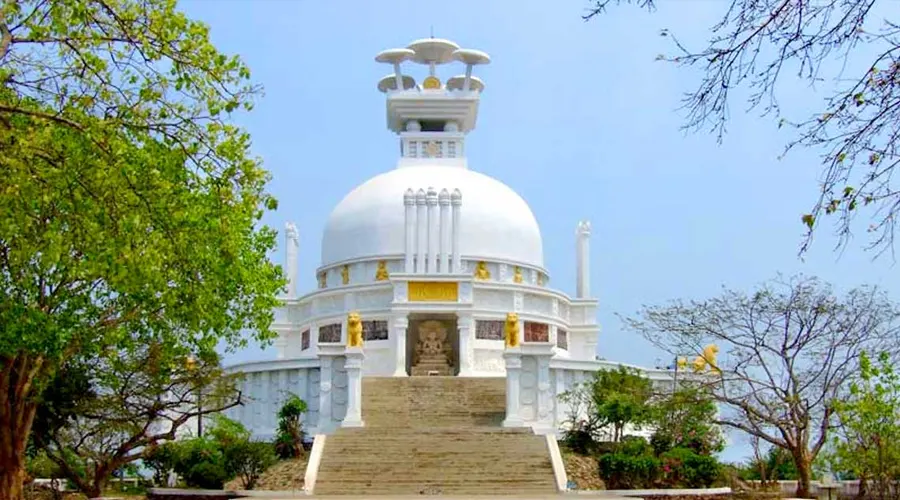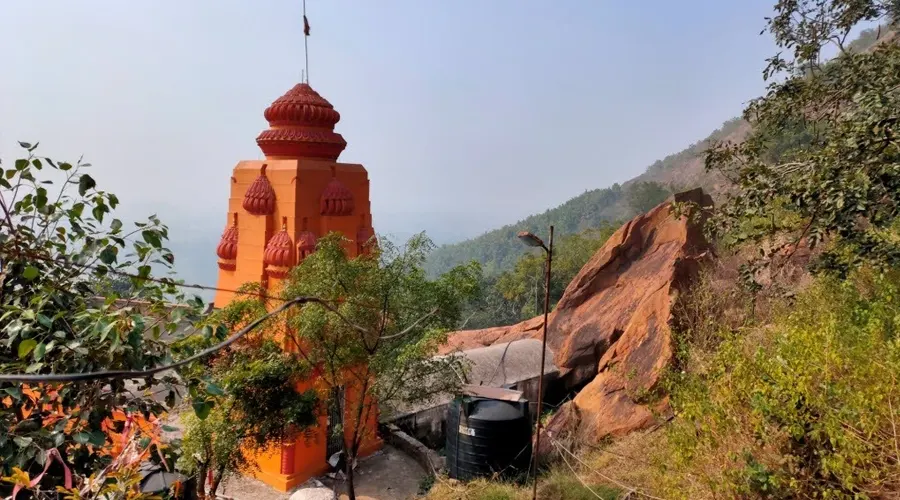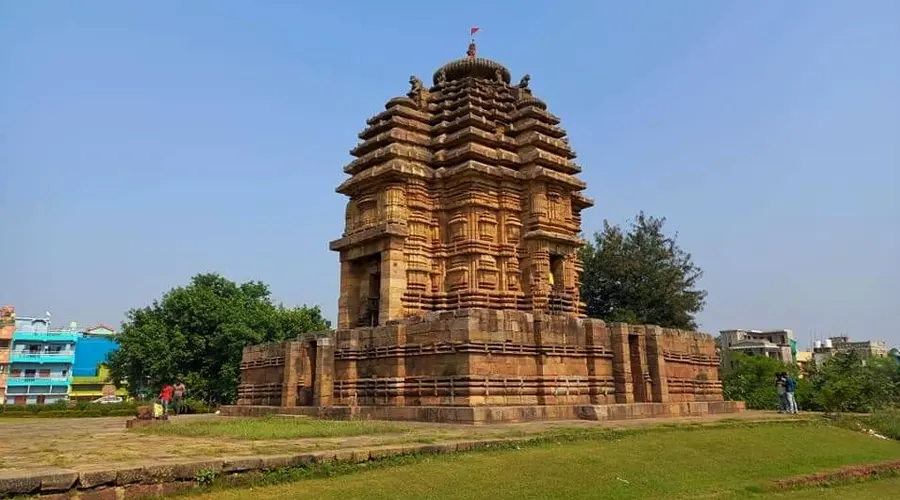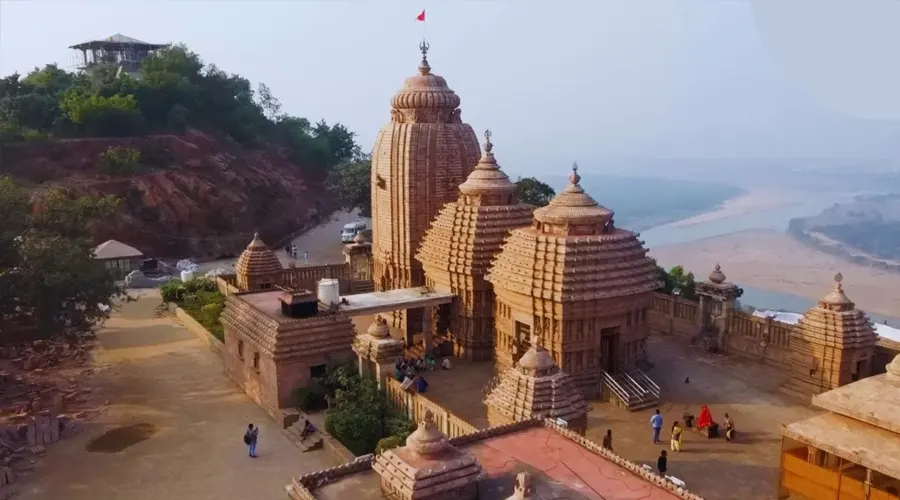Samaleswari Temple
Comfortably seated on the banks of the Mahanadi River in Sambalpur district, Odisha, Samaleswari Temple was built in the 16th century, and hence, it is touted as one of the oldest Hindu shrines in Odisha. The temple is devoted to the Maa Samaleswari Goddess. From the ancient time, Maa Samaleswari has been worshipped as Mahalaxmi, Adishakti, Mahasaraswati, and Jagatjanni in the region. Moreover, the temple hosts many festivals that are celebrated with so much devotion and ardor.
Amongst those festivities, the famous are Nuakhai and Navratri or Dussehra. A larger chunk of devotees, from various parts of the country, can be seen celebrating these festivals at Samaleswari Temple. Apart from being a prominent pilgrimage site in the district, the place is also a good sightseeing option. In the proximity of the temple, various wildlife sanctuaries also fill the hearts of travelers with an incredible wildlife experience.
History of Samaleswari Temple
There are many legends and stories connected with the temple of Goddess Samaleswari. As per the historical pieces of evidence which are found, it is said that the Chowhan dynasty king, King Balaram Dev built the temple of Goddess Samaleswari in the 16th Century AD.
There is a very famous historical incident that is related to the Samaleswari Temple once King Balaram Dev visited the localities where the Samaleswari Temple of the present day is located and under the Simuli Tree he found images of goddess Samaleswari and from there he got the idea of constructing a huge temple of Goddess Samaleswari. Chhatra Sai Deo, the 7th Independent King of Sambalpur rebuilt the temple in years 1657 to 1665. The deity of the Samaleswari Temple was then named Samalei due to the temple Simuli Tree under which it was constructed.
Architecture of Samaleswari Temple
A special stone is used as the construction material in constructing the Goddess Samaleswari temple which is believed to be much stronger than the Granite. The stones are then cemented with that of the lime mortar. The entire temple building is plastered but due to the rain, weather, and many other climatic conditions the temple structure has become stale.
The Samaleswari Temple structure is divided into two different structures.
Square shaped sanctum sanctorum which enshrines the deities is situated at four steps below the 10’ feet-wide circumambulation which is covered and is also supported by the 12 stone pillars. 11 idols of Parswa Devis the side Goddess are also embedded on the outer wall of the sanctum which allows the devotees to worship them while performing the parikramas (rotations).
The plinth of the Structure of Samaleswari Temple is around 16’ high and the building is structured in a square shape above the plinth. The arch of the temple of Goddess Samaleswari is supported by eight abutments, along with the arched roof, which commences at a height of around 18 feet and gets tapered to 35 feet.
A wide area is also there on the extreme northern side of the Samaleswari Temple which separates the main temple with some 16 odd pillars constituting the audience hall, also known as the Sabhaghra. Eight artificial temple motifs are used to decorate the prime part of the temple the larger motifs face towards all the sides and the smaller ones focus towards the four corners of the temple. The motif which faces towards the North has got an arched opening which then recommends towards the main entrance of the holy temple.




